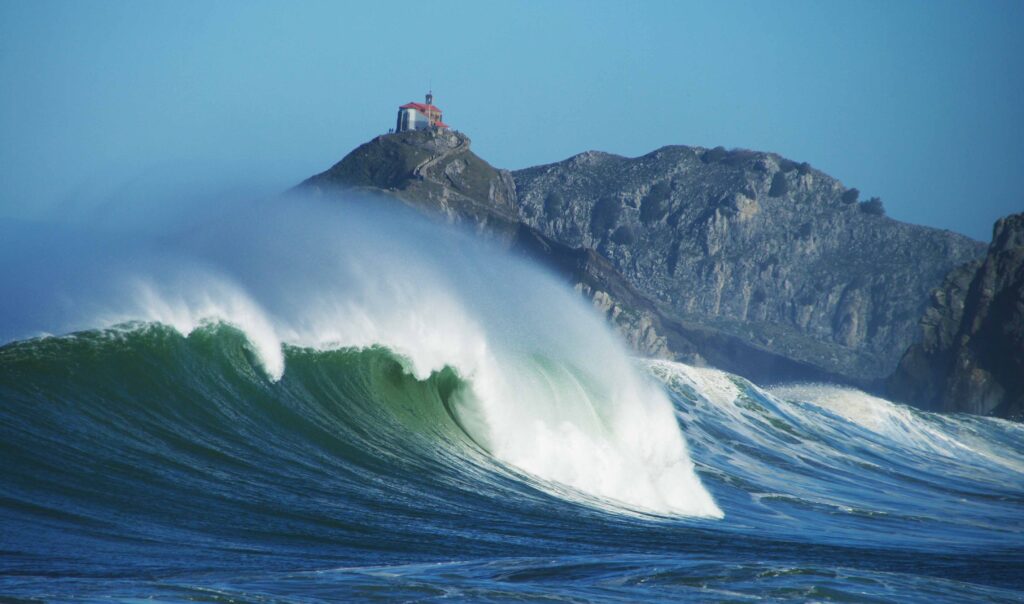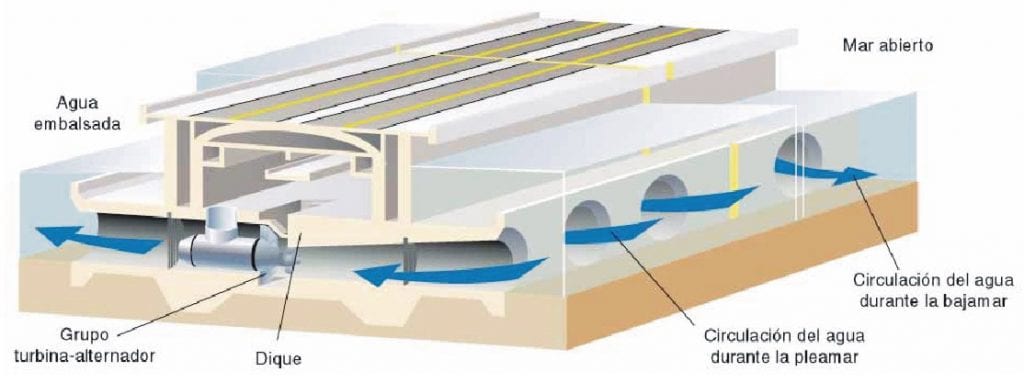
Both energies come from the sea, but do you know where tidal energy and wave energy come from?
The truth is very easy to know what energy it is and it is that the name gives many clues, for example tidal, comes from the tides and tidal, already a little more difficult, it comes wave.
Briefly and with the basic information that you have to keep is that the Seawater energy as we have said it comes from the tides, a movement that consists of a sea level rise and produced up to twice a day by the attraction of the Moon.
The use of this type of energy is very similar to hydroelectric power (We will talk about it in the future). Once we have a dam located in an estuary (the mouth of the estuary is formed by a single wide arm in the shape of a widened funnel) with gates and hydraulic turbines installed, we give importance to the height that the tides can reach.
In other words, when the high tide is about to be reached (the tide rises), the gates are opened by rotating the turbines with the water that enters the estuary to later accumulate a sufficient water load and thus be able to close the gates preventing the water from returning to the sea.
Once the low tide arrives (low tide), the water is let out through the turbines.
These movements of water make the turbines turn both in the process of entering and leaving the water and is what generates this production of electrical energy.

In tidal energy we can find both advantages and disadvantages.
Within the advantages it can be said that it is a renewable energy and that it is a very regular energy, since there is always that movement of the tide regardless of the year.
However, the drawbacks are greater, such as that it has intermittent energy production, you have to wait early and late in the day to produce it, the size and cost of your facilities, etc.
On the other hand we have the wave energy, which is nothing more than the energy of the waves as I have mentioned previously and is that ocean waves contain a large amount of energy derived from the winds, so that the ocean surface can be seen as an immersed collector of wind energy.
It is one of the types of renewable energies most studied today and there are several devices such as the Cockerell's Raft and Salter's Duck to convert wave motion into electricity
The Salter duck is a float in the shape of a duck (hence its name) where the narrowest part opposes the waves in order to absorb their movement as well as possible. These floats rotate under the action of the waves around an axis providing a rotational movement around its axis, managing to activate an oil pump, in charge of moving a turbine.

On the contrary, the Cockerrel raft consists of articulated platforms ready to receive the impact of the waves. These rafts ascend and descend using this movement to drive an engine that moves a generator through a hydraulic system.
However, there are also advantages and disadvantages, as an advantage we find that the environmental impact is practically zero, many of the coastal facilities can be incorporated into port or other complexes without saying that it is a renewable energy source.
As drawbacks; Wave energy cannot be accurately predicted, since waves depend on weather conditions, in offshore installations it is very complex to transmit the energy produced to the mainland, etc.
As you can see, it is easy to differentiate the two types of energies that are produced in the sea, although we can also take advantage of the energy from marine currents, the conversion of oceanic thermal energy and even the energy from the saline gradient, something less usual but that a Today it is being studied to get the best out of the oceans and to try that in the future entire cities can be self-sufficient with these types of renewable energy.
The French have had their motor sickness center in the estuary of the Rance River for 50 years, and unlike Zapatero, they bet on research in this energy, with a single experience, instead of giving away billions of footwear in energy, in a trance of be investigated, and without being profitable yet. If we already know that it will be profitable in the future, then we will invest appropriately in technologies.
I can't agree more with you Josep.
Regards and thanks for your comment.